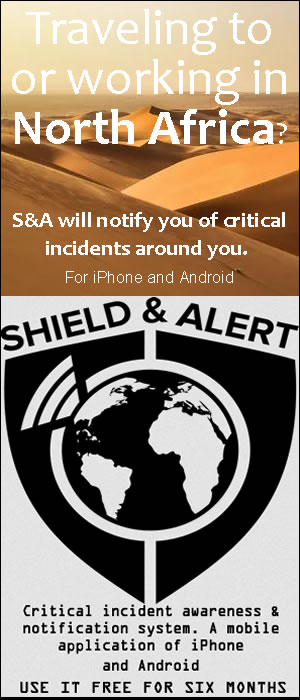A rubber dinghy brings back dozens of people from one of six boats the Tunisian coastguard intercepted in a 24-hour period off Sfax, a migrant launchpad for Europe. “Our priority is to save lives,” said Mouhamed Borhen Chamtouri, a commander of Tunisia’s coastguard, as the dinghy headed towards the speedboat that had spotted the migrants on radar. Chamtouri, who is based in Sfax, was speaking after 24 hours spent intercepting and rescuing migrants who left the port city between Wednesday and Thursday.
This year, Sfax has emerged as a key hub for migrants hoping to cross the Mediterranean from the Tunisian coast, the closest point being less than 130 kilometres (80 miles) from the Italian island of Lampedusa. The International Organization for Migration says over 1,800 people have died attempting the route so far this year, more than twice as many as last year — making it the world’s deadliest migrant route.
The latest tragedy off Tunisia’s coast was a shipwreck last weekend that left at least 11 people dead and 44 missing. “There’s no doubt about it. You’ve seen in the past 24 hours that we’ve carried out several rescues,” Chamtouri told AFP correspondents accompanying his crew. “Three boats broke down and operations were not easy for us.”
The Tunisian coastguard says it intercepted 34,290 migrants in the six months to June 20, most from sub-Saharan African countries, compared with 9,217 over the same period in 2022. Human Rights Watch alleged on July 19 that Tunisia’s security forces, including the coastguard, had “committed serious abuses against black African migrants” that include collective expulsions and dangerous actions at sea.
The coastguard’s Sfax patrols intercepted 216 migrants who had left separately on six boats while the AFP team was on board for the search and rescue mission. They were dozens of black African migrants, including women and children, who travelled on overloaded and fragile vessels assembled at the last minute on shore, and 75 Tunisians, all men, who were able to afford trips on sturdier boats. When the dinghy approached their craft, the Africans cried and begged the coastguards to let them go.
‘Seventh attempt’
One young man from the Ivory Coast told AFP he was on his “seventh attempt” to make it across the Mediterranean. The number of Africans attempting to make the crossing has spiked since Tunisian President Kais Saied alleged, in a speech on February 21, that “hordes” of irregular migrants were causing crime and posing a demographic threat to the mainly Arab country.
Many have also fled since hundreds of migrants were arrested or chased into the desert after the deadly stabbing of a Tunisian man in a brawl between Tunisians and migrants in Sfax on July 3. Italy says almost 94,000 migrants have arrived on its shores since the start of the year — more than double the number for the same period in 2022. This month, the coastguard in Sfax has intercepted about 3,000 migrants in just 10 days, 90 percent of whom were from other parts of Africa, Chamtouri said.
In July, the European Union signed an agreement with Tunisia that provides for 105 million euros ($115 million) in direct European aid to prevent the departure of migrant boats and combat smugglers. It included 15 million euros earmarked to finance the “voluntary return” of 6,000 African migrants to their countries of origin.
The agreement coincided with Tunisia’s “expulsion” since early July of “more than 2,000 African migrants” to desert or inhospitable areas on the borders with Algeria and Libya, according to a count given to AFP by humanitarian sources. Amnesty International accused the EU in response of “focusing their policies and funding on containment and on outsourcing of border control rather than ensuring safe and legal routes”, making the bloc “complicit in the suffering” of migrants.
Baby among two dead as migrant boat sinks off Tunisia
At least two Tunisians including a baby died when their boat sank Saturday soon after leaving the country’s shores, the coastguard said, amid spike in attempts to reach Europe. Tunisia is a major gateway for migrants attempting perilous voyages across the Mediterranean in often rickety boats in hope of a better life. The vessel carrying 20 Tunisians went down at 2:00 am (0100 GMT) when it was only 120 metres (395 feet) from the coast in Gabes, the North African country’s coastguard said.
“Two bodies have been recovered, one of a 20-year-old man and the other of an infant,” it said in a statement. Five passengers were missing, the coastguard said, adding search operations were ongoing and 13 others had been rescued, including the baby’s parents.
Authorities in the city of Gabes have launched an investigation to “determine the circumstances of this tragedy”, it added. Witnesses said the boat had just left Gabes when those on board saw a trawler they mistook for a coastguard vessel. They tried to turn around, fishermen told journalists, but the boat capsized and the baby became stuck in nets on deck, the witnesses said.
More than 1,800 people have died this year in shipwrecks on the central Mediterranean migration route, the world’s deadliest — more than twice as many as last year, according to the International Organization for Migration. On Monday judicial officials reported the deaths of 11 migrants in a shipwreck off Sfax, with dozens more missing. The eastern Tunisian port city located about 130 kilometres (80 miles) from the Italian island of Lampedusa has emerged as a key migrant launchpad.
Migrant interceptions double
The Tunisian coastguard says it intercepted 34,290 migrants in the six months to June 20, most from sub-Saharan African countries, compared with 9,217 over the same period in 2022. The number of Africans trying to make the crossing has spiked since Tunisian President Kais Saied alleged in a February 21 speech that “hordes” of irregular migrants were causing crime and posing a demographic threat to the mainly Arab country.
Many have also fled since hundreds of migrants were arrested or chased into the desert after the deadly stabbing of a Tunisian man in a brawl with migrants in Sfax on July 3.
Tunisians have opted for the sea journeys in growing numbers as the country faces a grinding economic crisis and severe shortages of basic staples. Italy says about 95,000 migrants have arrived on its shores since the start of the year — more than double the number for the same period in 2022. Tunisians are the fourth-largest group among them, behind migrants from the Ivory Coast, Guinea and Egypt.
Mouhamed Borhen Chamtouri, a commander of the coastguard in Sfax, told AFP on Thursday that this month the force had intercepted about 3,000 migrants in just 10 days, 90 percent of whom were from other parts of Africa. In July, the European Union signed an agreement with Tunisia that provides for 105 million euros ($115 million) in direct European aid to prevent the departure of migrant boats and combat smugglers.
In the Atlantic, migrants head to Spain with great peril
Morocco’s navy rescued more than 60 migrants from sub-Saharan Africa when their boat got into difficulties in the Atlantic off Tarfaya, the official MAP news agency reported on Friday. “A Royal Navy unit intercepted a boat in difficulty, with 67 candidates for irregular migration” to Europe on board, some 100 kilometres north of Tarfaya, a military source told MAP. Spain’s Canary Islands are only about 150 kilometres (90 miles) off southern Morocco.
Those rescued, among them a woman and three minors, were given first aid before being taken to the port of Laayoune in the disputed Western Sahara on Friday for processing, MAP said. On Tuesday, the navy intercepted more than 50 sub-Saharan African migrants off the kingdom’s southwest coast. That interception came a day after a military source told MAP the navy had recovered the bodies of five migrants and rescued 189 others after their boat capsized off the Western Sahara.
Moroccan authorities said they foiled 26,000 irregular migration attempts in the first five months of the year. Atlantic crossings began surging in late 2019 after increased patrols along Europe’s southern coast dramatically reduced Mediterranean crossings. The Canary Islands migratory route has experienced a marked upsurge in activity in recent weeks.








